These Are the Best Smart TVs You Can Buy Right Now
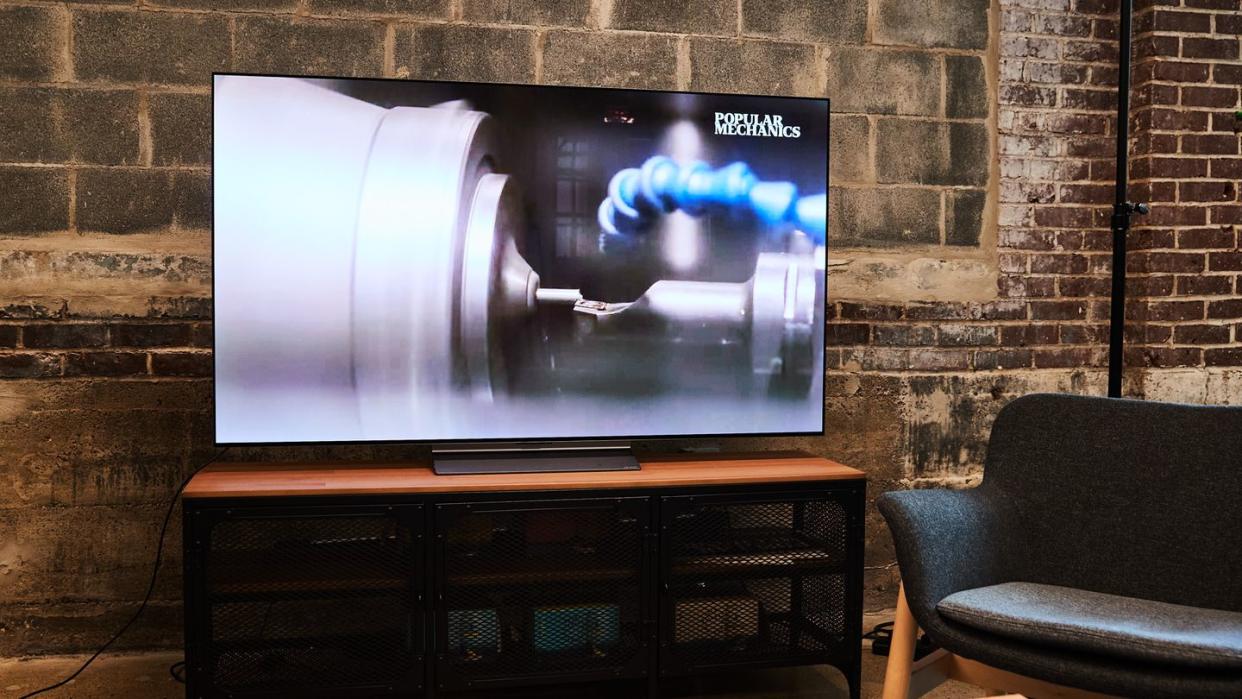
"Hearst Magazines and Yahoo may earn commission or revenue on some items through these links."
These days, every TV is a smart TV. In addition to eye-popping color and sharp lines, the modern television features a whole ecosystem of apps, including all your favorite streaming services and convenient features like built-in voice control. To help you find your next home theater centerpiece, we’ve rounded up the best smart TVs with both top performance and the most helpful features across a wide range of price points and display types, from premium OLEDs to cheaper LED TVs and everything in between. Whatever you’re into, you’ll find it here, so dive in and grab the right one for you.
Home Theater Heaven: Best Soundbars●Best 65-Inch TVs● Best Projectors
Best Smart TVs
Best Overall: Hisense U8K
Best Value: Hisense U6K
Best OLED: Samsung S90C
Best QLED: TCL QM8
Best Operating System: Roku Plus Series T
The Expert: I’ve been writing about and evaluating TVs and audio technology for over a decade at publications like Wired, Insider, Digital Trends, and others. I’ve reviewed virtually every kind of TV and display technology available, from budget HD screens to premium 4K, and even 8K TVs. I have hands-on experience with the best new OLED, and QLED TVs from brands like Samsung, LG, Sony, TCL, Hisense, Roku, and others. I love finding people the best tech for their needs and budget, and I take that responsibility seriously.
What to Consider in a Smart TV
Operating Systems
Just like how an iPhone uses Apple’s iOS or Samsung phones use Google’s Android, modern smart TVs incorporate a baseline smart platform that acts as the main interface for advanced features like connecting to streaming services and smart home devices. While all operating systems look similar at a glance, there are some differences among them that are worth keeping in mind.
Roku OS has long been my favorite smart TV operating system for its intuitive, no-nonsense layout, and impressive array of apps. Though it has gotten more cluttered and ad-heavy over the years, the system is full-featured and allows for easy search across services, including optional voice search and control. Unfortunately, Roku has fallen out of favor with popular brands like TCL and Hisense, becoming increasingly less available outside of Roku’s own TVs.
Google TV, an evolution of Android TV, has stepped in as a great alternative. It’s nearly as intuitive as Roku thanks to its simple setup in the Google Home app, with built-in Google search and options like voice control and smart home integration. Like most competing systems, its home screen can get cluttered with ads, but the ability to sign in with your personal Google account allows for easier logins to apps and services. You can even use your Google Photos as screensavers with many models. The implementation differs by manufacturer, and it can occasionally be sluggish, but its smart design and robust feature-set make it a top choice.
Samsung’s Tizen doesn’t feel as seamless as Roku and Google’s offerings, though it also has its advantages. Tizen can feel overstuffed, and some of the settings are poorly organized, but you can mitigate that to a degree by customizing your layout. Gamers specifically will love options like built-in cloud gaming from services like Xbox and Amazon Luna – no console required. It also provides available support for both Amazon Alexa and Samsung Bixby voice assistants, as well as integration with Samsung’s smart home ecosystem, SmartThings.
LG’s webOS setup feels more clunky in comparison to Tizen, and its streaming apps seem to require constant updating. That said, it offers advanced features like built-in cloud gaming in some cases (though Xbox isn’t supported), alongside speedy response and intuitive control with TVs that include LG’s point-and-click Magic remote. Voice control is also available via Amazon Alexa, and the system supports LG’s ThingQ smart home ecosystem.
One other notable smart TV operating system gaining traction among budget TV brands is Amazon’s Fire TV. While I find its aggressive ads for Amazon products and services off-putting, it’s a relatively responsive system that powers some cool features. Fire TV’s built-in Amazon Alexa voice assistant allows for options like hands-free voice control and content search, as well as seamless integration with Amazon’s Echo smart home devices.
Display Type
All of the TVs on our list offer 4K resolution with High-Dynamic Range (HDR) support, allowing you to watch the best possible version of your favorite shows and movies. However, The quality of your TV’s picture can vary quite a bit based on the technology used to make the screen.
There are two primary display technologies to consider when buying a new smart TV: LED, the traditional tech that has powered flat-screen TVs for years, and OLED, a newer, sharper and more expensive alternative. In a nutshell, LED displays are more affordable and offer superior brightness thanks to their powerful backlighting. OLED panels, short for Organic Light-Emitting Diode, are able to light each pixel on the screen individually, creating better contrast for a more natural and immersive picture. Thanks in part to this enhanced control, most experts prefer the picture from an OLED TV over a standard LED screen.
That said, there are more options, which adds complication if you’re looking for a top-of-the-line TV.
QLED TVs are LED displays enhanced by a layer of “quantum dots,” tiny nanoparticles that get brighter when activated by certain light sources to enhance a screen’s overall brightness and color volume. They usually come with other display benefits like local dimming and mini-LED technology for more dimming zones in a given screen size. The more dimming zones, the better the backlight control, helping provide improved contrast between the brightest and darkest images. This allows the best QLED TVs to perform more like OLED TVs.
Finally, QD-OLED marries an OLED display with the quantum dots in a QLED TV for a true best-of-both-worlds solution. QD-OLED’s improved brightness and colors have made it an instant success, helping to spur other OLED advancements like LG’s OLED evo panels that offer its own brightness enhancements to better compete with quantum-dot technology. Both technologies are relatively new and found on only the best OLED TV models, though we expect them to become commonplace in the near future.
Refresh Rate
Refresh rate refers to how many images your TV can display in a single second. With fast-moving content like live sports and video games, support for a higher refresh rate opens the door for smoother animations and better performance. The best smart TVs offer a native 120Hz refresh rate rather than the baseline 60Hz. Some displays can even increase to 144Hz when you plug in a compatible gaming PC.
Gaming Features
Speaking of gaming, if you’re interested in connecting a next-gen gaming console or PC to your smart TV, you’ll want to look for HDMI 2.1 inputs. The latest generation of HDMI, a 2.1 connection, enables higher data transfer to support advanced features like Variable Refresh Rate (VRR), which can match the display’s frame rate with your source device to prevent jerky response, and Auto Low-Latency Mode (ALLM) to automatically turn on gaming features and optimize the TV’s input response time. The best smart TVs increasingly support these features, even in mid-tier and budget models.
Smart Home Support
Regardless of your TV’s operating system, many smart TVs offer at least some compatibility with a variety of smart home services, including Google Home, Alexa, and Apple’s Home Kit. This may include features like voice assistant commands and search; the ability to stream content from your phone via services like Google Chromecast or Apple AirPlay 2; and compatibility with smart home devices like smart speakers, smart displays, and other devices.
Depending on the brand, your TV’s operating system may further define which smart home features are available. For example, Samsung’s Tizen operating system includes compatibility with the company’s SmartThings app and devices. Similarly, Amazon’s Fire TV is powered by Alexa, offering advanced support for Amazon’s Echo smart home devices.
Ultimately, your TV’s utility as a smart home portal will depend on what ecosystem you use at home and what other smart devices are in play. Samsung’s Tizen operating system better incorporates Samsung’s SmartThings products, while Amazon’s Fire TV operating system may offer better features for Alexa devices. That said, most smart TVs offer at least some integration with Google Home, Apple HomeKit, and Amazon Alexa.
How We Selected The Best Smart TVs
I selected the Best Smart TVs by weighing a variety of aspects, from general picture quality and features to gaming prowess and overall value after testing the top models currently available over the last year. As you might guess, I put a heightened emphasis on each TV’s smart operating system, paying particular attention to aspects like an easy initial setup, intuitive operation, and smart home features.
I put these TVs to the test over multiple days of use to get a feel for what it’s like to live with each, from its smarts and operating system to its picture quality. I used the latest Spears and Munsil testing discs to lock in the best picture settings and tested the TVs with a wide array of content, including streaming video in both HD and 4K HDR, 4K HDR Blu-ray, and standard resolution broadcast content. Additionally, I checked customer feedback and reviews from retailers like Crutchfield, Best Buy and Amazon to gauge user feedback and reviews.
U8K
With so many excellent TVs to choose from this cycle, picking the best smart TV was a tough call, but Hisense’s fabulous U8K gets the crown thanks to its mix of fantastic image quality, multiple size options, and great features. Powered by Google TV, it offers intuitive setup and operation, including advanced voice controls and content searching. Its four HDMI 2.1 inputs serve up versatile connection options for next-gen gaming fans of all types.
The U8K’s QLED picture performance will dazzle even discerning viewers thanks to its incredible brightness, voluminous colors, rich black levels, and fantastic contrast courtesy of its nimble mini-LED backlighting. Its only notable flaw is that, like the vast majority of LED TVs, it loses some picture quality when viewed off-axis. Otherwise, its blend of stellar performance and loads of features make the U8K a clear choice as the best smart TV for your money.
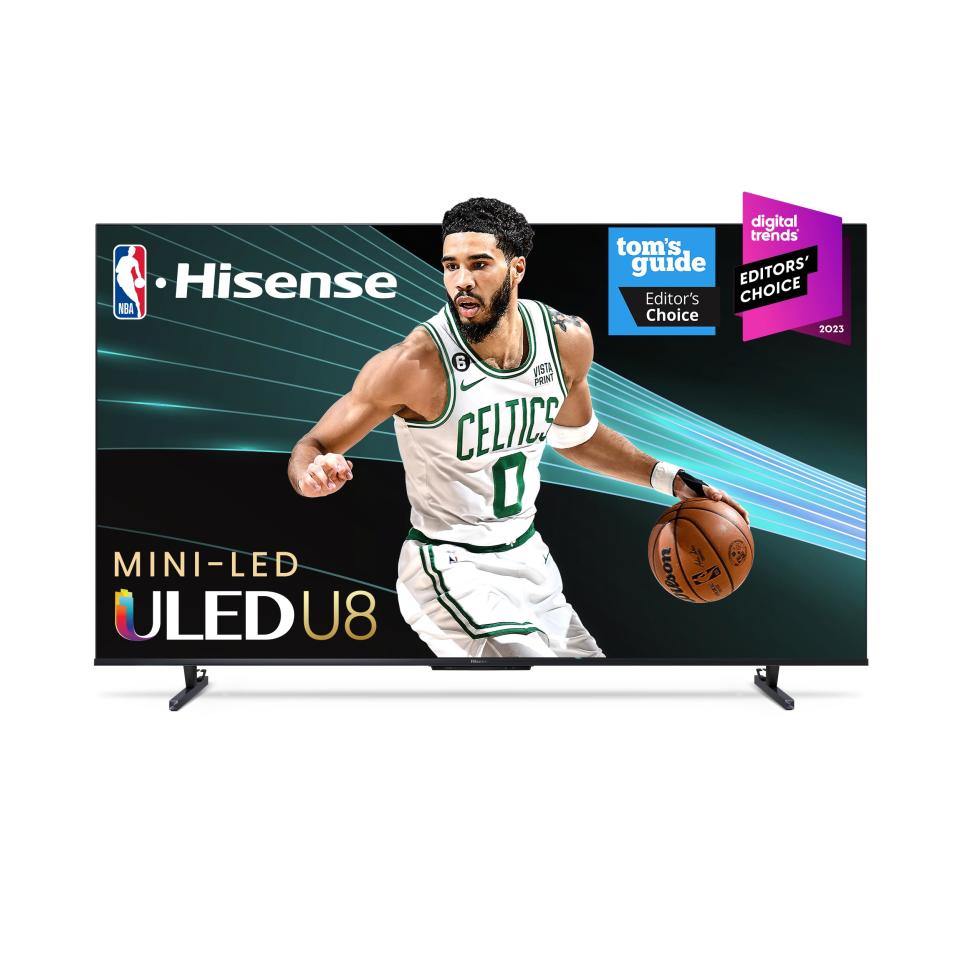
U8K
amazon.com
$897.98
U6K
Hisense’s U8K is the top performer in its class, so it’s no surprise that another member of the family is our top choice for budget-conscious shoppers. It starts with the U6K’s loaded Google TV interface, which offers advanced features like content curation and smart home integration, and makes setup and streaming intuitive. The TV also includes gaming features we don’t expect at this price, including VRR to reduce screen stuttering with fast-paced games.
As the only mini-LED TV in its class, the U6K provides unparalleled contrast for the money, alongside solid brightness, excellent shadow detail, and vibrant colors. The 60Hz refresh rate means it won’t be the best option for fast-moving video like sports, but there’s little else to complain about here. If you need a great TV on a thin dime, look no further.
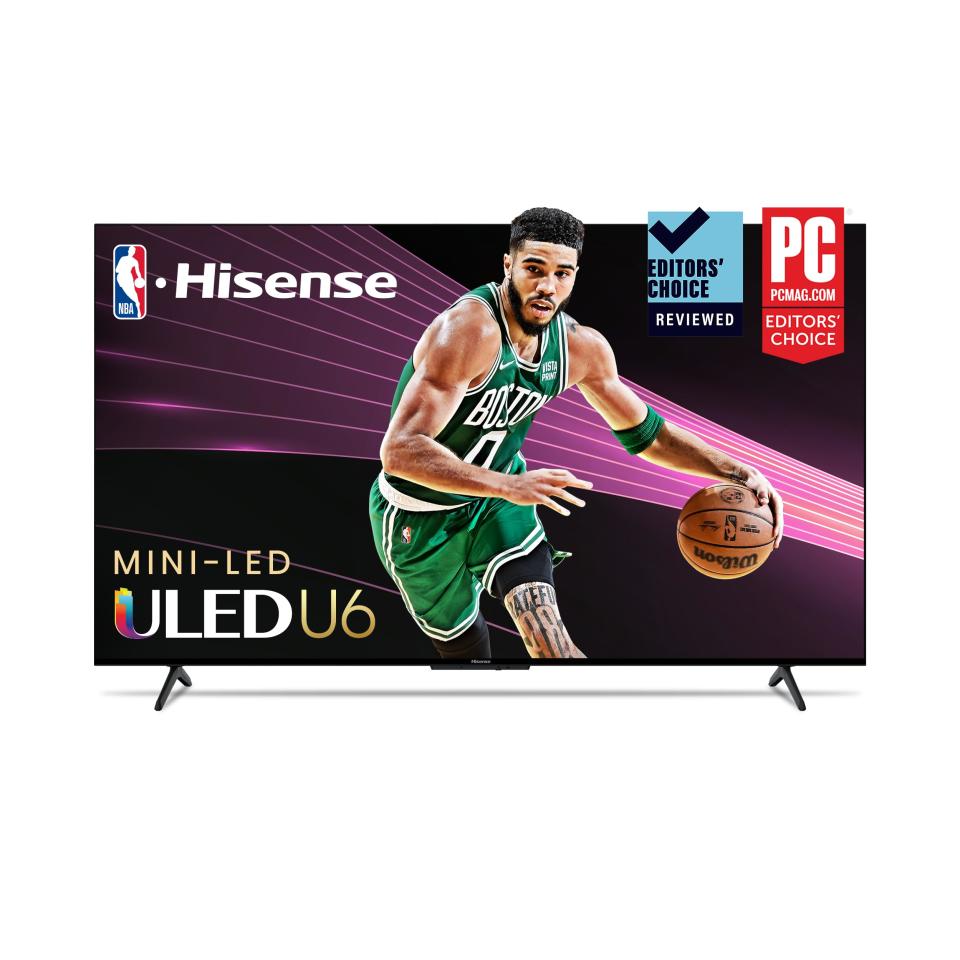
U6K
amazon.com
$548.00
S90C
Combining the best of our favorite OLED and QLED TVs, the S90C is a fantastic choice for those seeking a top-performing OLED TV without sacrificing punchy brightness. Along with perfect black levels and vivid HDR performance, the S90C’s picture achieves deep and voluminous colors and smooth motion response, with excellent picture processing for a clear and immersive image from any angle.
Apart from its fantastic picture, the S90C serves up great gaming features thanks to Samsung’s feature-packed Gaming Hub, and all the streaming services you could need from its Tizen interface. Tizen connects with Samsung’s SmartThings app for smart home integration, while voice control is built-in via Amazon Alexa and Samsung Bixby.
The TV tops things off with a sleek, premium design, all for less money than Samsung’s top-of-the-line OLED, the S95C. The only real negative is that, like all Samsung models, the TV doesn’t support Dolby Vision HDR.
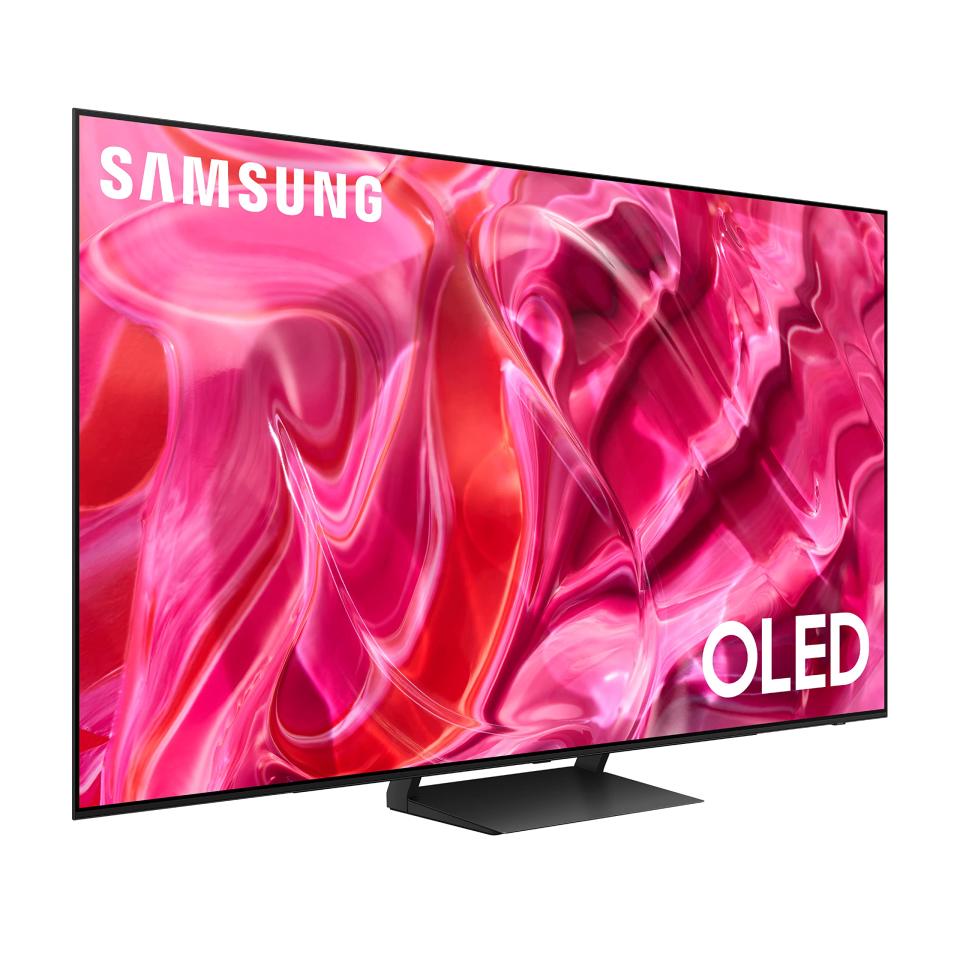
S90C
amazon.com
$1597.99
QM8
TCL’s QM8 was a contender as the Best Overall smart TV, which makes it an easy pick as the best QLED. This mid-range TV offers spectacular performance on par with my top pick, including sunburst brightness, excellent picture processing, rich colors, and stark contrast control thanks to its mini-LED backlighting with hundreds of dimming zones.
Its Google TV operating system provides smooth navigation and voice controls, alongside seamless Google smart home integration. You’ll also get next-gen gaming features like VRR and ALLM and a handy gaming bar to make adjustments on the fly.
The QM8 comes in a wide range of sizes, but the lack of a 55-inch model means you’ll have to go relatively big (and/or go home). One minor drawback is that the TV only offers two HDMI 2.1 inputs for gamers, though we imagine that will be enough for most users. It also offers middling off-axis viewing, getting paler from the side relatively quickly. Overall, though, it’s a knockout smart TV for the money, providing some of the best performance in its class and beyond.
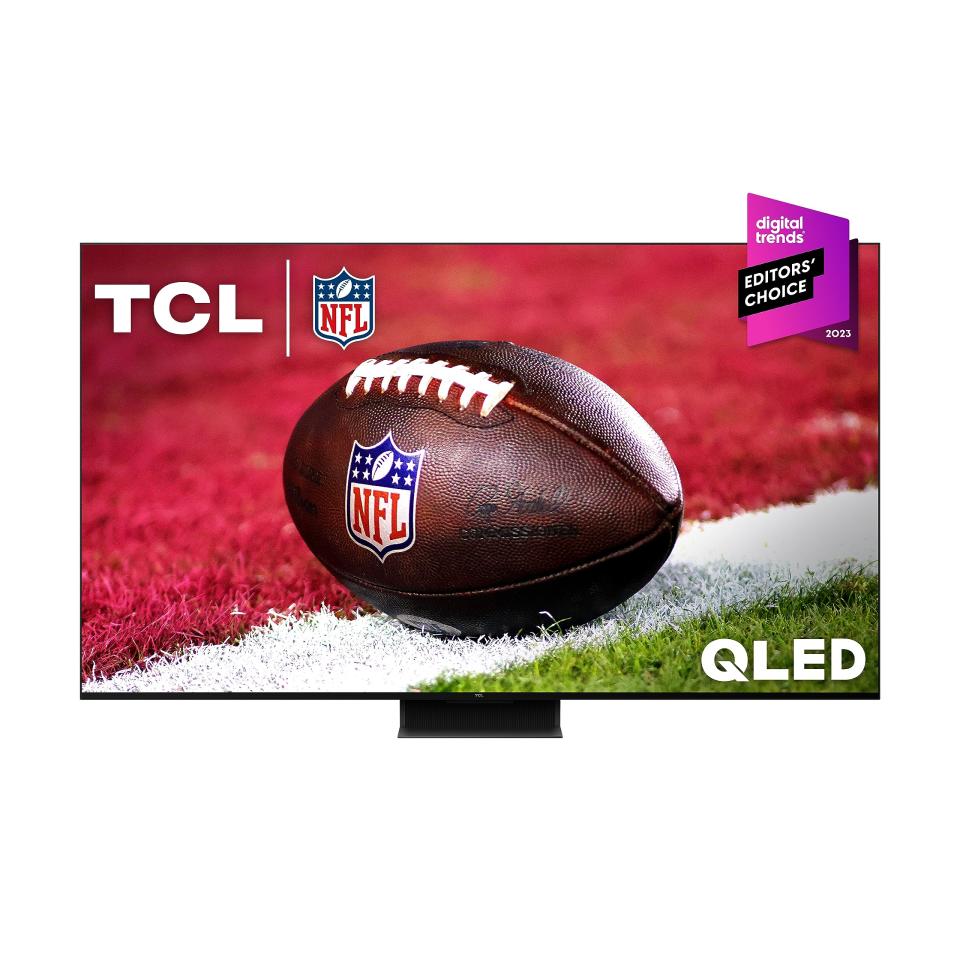
QM8
amazon.com
$898.00
Plus Series TV
Roku’s first foray as a TV manufacturer was mostly a success, with the Plus Series making waves as a good mid-tier option. The TV’s best attribute is its Roku operating system, which provides intuitive navigation and great features like the ability to search for content, switch inputs, and turn the TV on or off with your voice.
The picture provides solid HDR brightness and contrast for the money thanks to the panel’s quantum dots and local dimming. It lacks the high-performance flourishes of the flagship TVs from more seasoned manufacturers, including a limited 60Hz refresh rate and gaming options like VRR.
That said, if you’re looking for an affordable, Roku-powered display that doesn’t skimp on performance, this is your best choice.
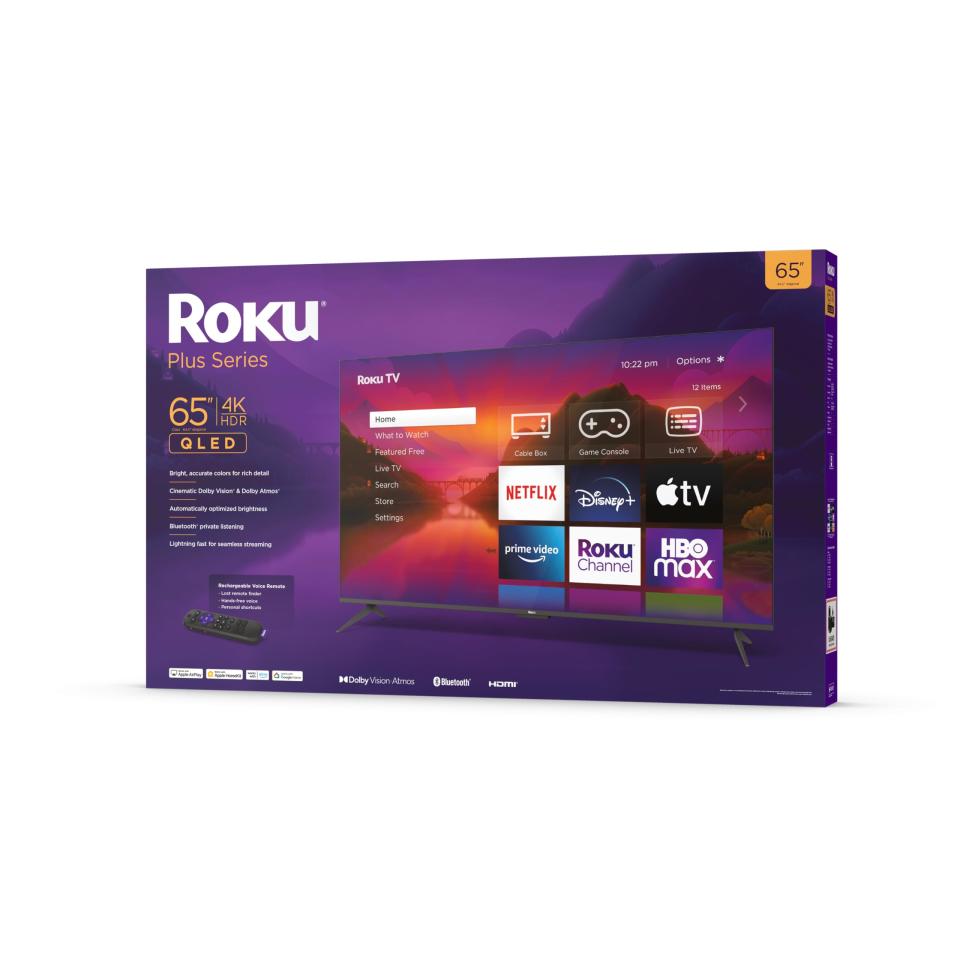
Plus Series TV
amazon.com
$599.99
S95C
With its lightning-quick response time, reams of next-gen features, and Samsung’s loaded Gaming Hub at the helm, the S95C is a gaming powerhouse. Like the S90C, it offers great smarts, including integration with Samsung’s SmartThings app and voice control via Amazon Alexa and Samsung Bixby.
Its fantastic picture quality seals the deal with a QD-OLED panel that produces a vividly bright image alongside precise and voluminous colors, deep contrast and the perfect black levels that make OLED displays so immersive.
The TV’s exterior design looks just as sharp as what’s inside, with a sleek pedestal stand and Samsung’s One Connect box, which runs all source devices and power to the main display over a single thin strand. If you’re on a budget, you’ll get a lot of what’s great about this TV in the S90C, but this will bring out the absolute best in your gaming experience.
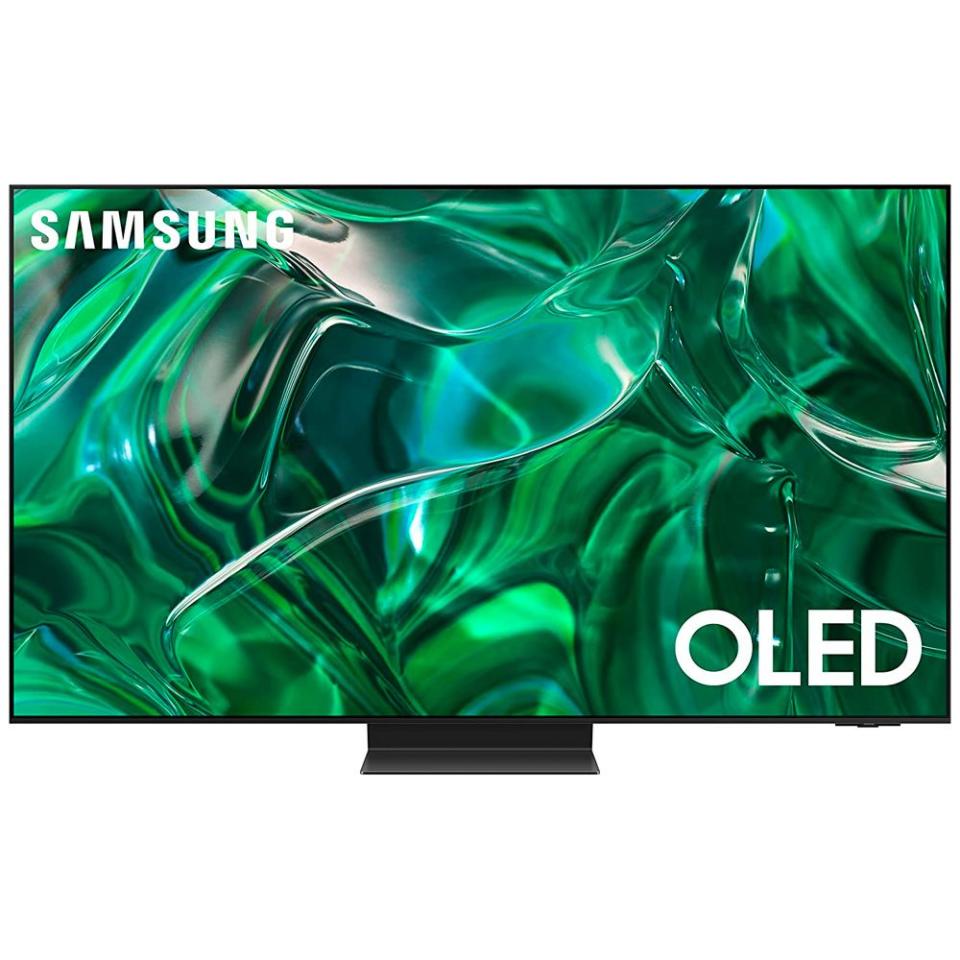
S95C
amazon.com
$2297.99
C3
LG’s C-series is a perennial top choice among picture performance gurus for a reason. Its rich colors, excellent shadow detail, and lovely picture processing look good from any angle, making it a top big-screen option. Its speedy OLED panel provides good motion handling for sports and gaming, and while it doesn’t get as bright as LG’s flagship G3 or Samsung’s S95C, its reflection-resistant screen helps it excel in sunlit rooms.
The C3 backs up its picture performance with a snappy if sometimes quirky webOS operating system helmed by LG’s intuitive Magic remote for point-and-click control. You’ll also get advanced features like built-in support for Amazon Alexa voice control and search, as well as integration with LG’s ThinQ smart home system.
The C3 tops things off with loads of gaming features (including VRR and ALLM across all inputs) and built-in cloud gaming. It all adds up to a great smart TV for those looking to go big without compromising quality.
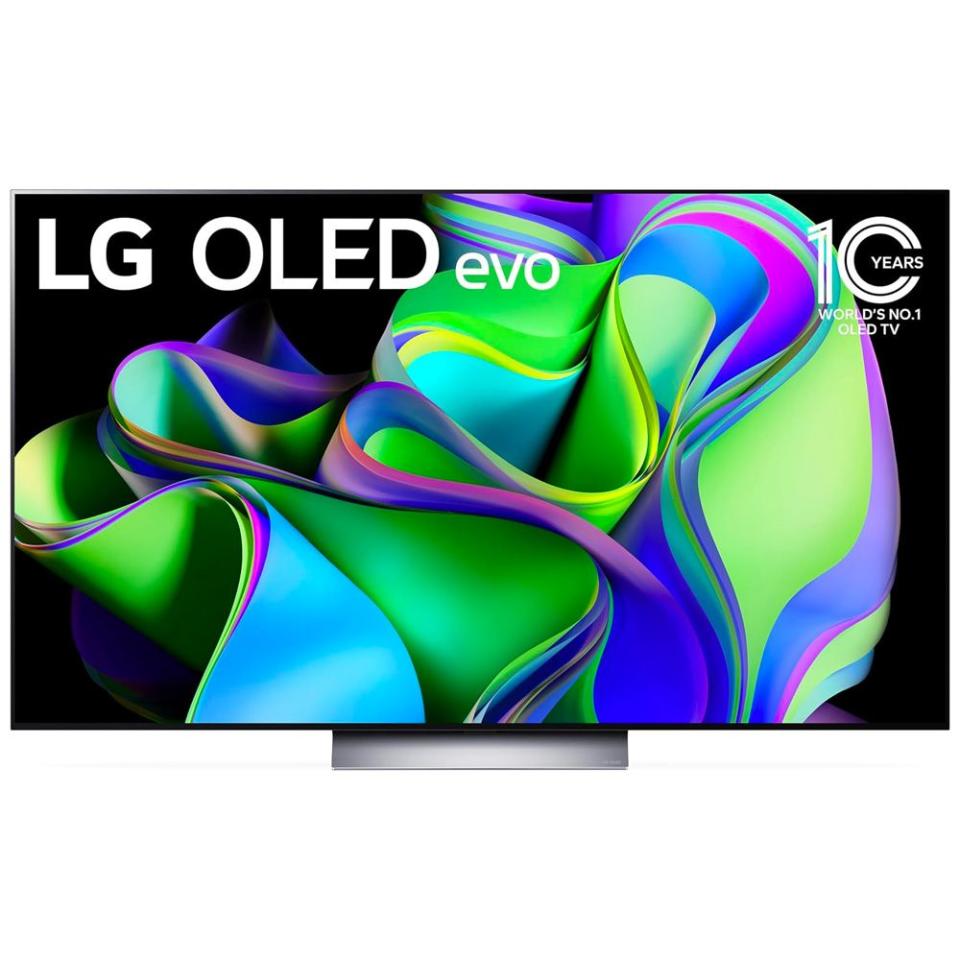
C3
amazon.com
$1546.99
A95L
Sony’s A95L is quite simply the best-looking TV I’ve evaluated. Its brightness meets or exceeds that of the best OLED TVs on the market, its colors look rich and accurate, and its picture processing is second to none. Sony’s Cognitive Processor XR aims to recreate on-screen images the way humans see the world, resulting in stunning clarity that elevates all your favorite content.
The TV offers impressive smart features like voice search and control via its intuitive Google TV operating system as well as an attachable camera for gesture controls and even proximity warnings for those with curious toddlers. Its stout panel provides the best onboard sound we’ve heard, alongside next-gen gaming features via dual HDMI 2.1 inputs (though at this price we would’ve liked to see four).
You’ll certainly pay for the privilege, but if you want the best-looking smart TV you can buy, this TV has got the goods.
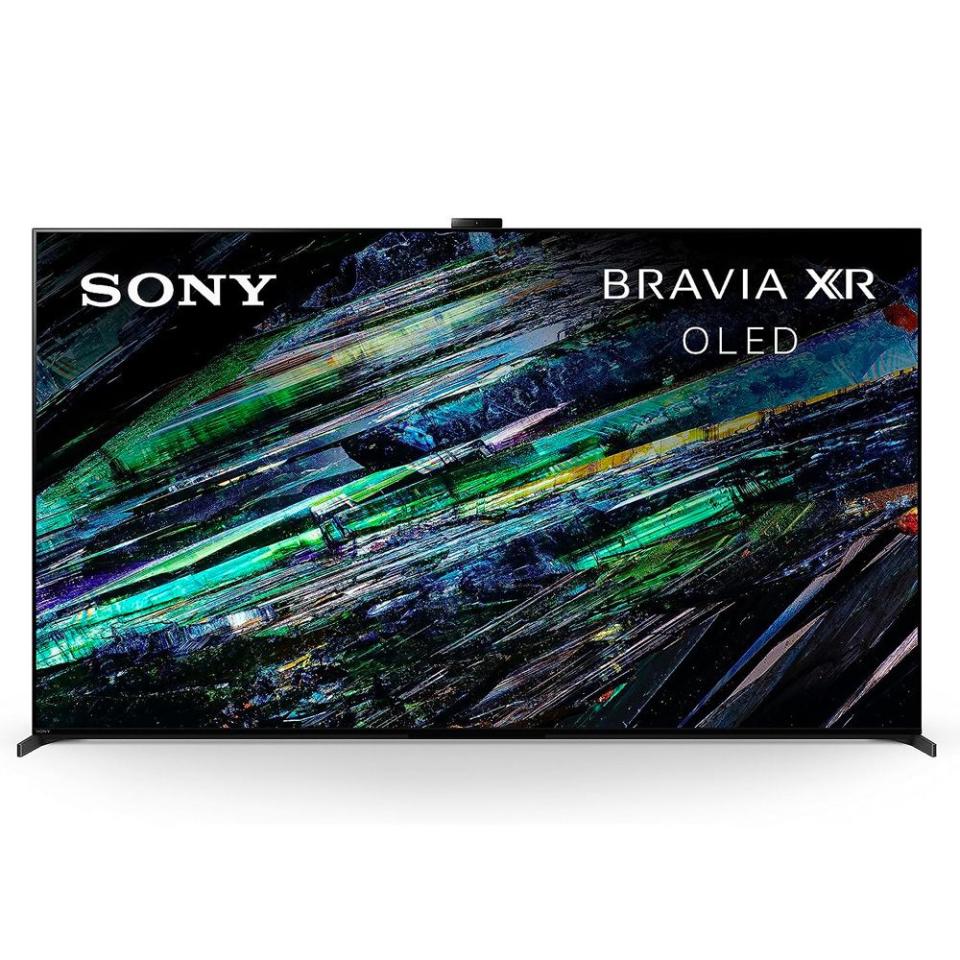
A95L
amazon.com
$3298.00
Fire TV Omni QLED
Amazon’s Omni QLED TV is powered by Amazon’s Fire TV OS for easy access to the brand’s ever-present voice assistant, Alexa. With Alexa voice control, you can search for content, launch apps, change inputs or volume levels, and more. The TV also supports a host of Alexa smart home devices and features, as well as options like an Ambient Mode that can turn the TV on or off when you enter or leave the room.
The Omni QLED provides a significant step up in picture performance from Amazon’s regular Omni TV, adding quantum dots for improved brightness and color volume (hence the “QLED” moniker) and upgraded contrast control via local dimming.
Like most LED TVs, it has a narrow viewing angle, and its 60Hz display means fast-paced content can look blurry. That said, this is a solid performer that will appeal most to those knee-deep in Amazon’s Alexa smart ecosystem.
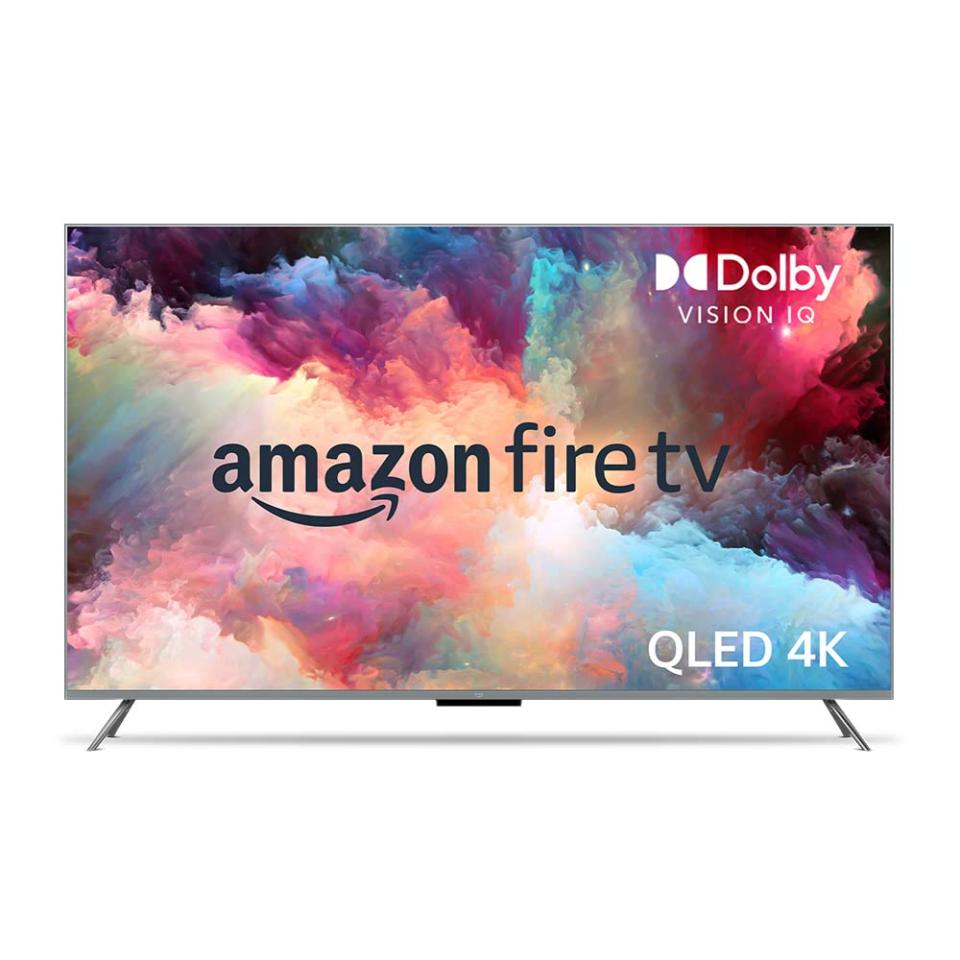
Fire TV Omni QLED
amazon.com
$679.99
Q+A With Home Theater Expert Ryan Waniata
What’s the difference between 4K and HD?
While some brands still make HD TVs in small sizes, 4K has become the standard resolution for TVs above 32 inches. 4K is shorthand for 3840 x 2160 pixels, which is four times as sharp as Full HD or “1080p” resolution (1920 x 1080 pixels.)
The question of HD vs 4K is mostly moot for new TV buyers at this point, but here’s what you need to know if you’re on the fence about upgrading from an older TV: Resolution becomes increasingly important as you increase your screen size. Modern streaming content is usually rendered in 4K resolution, though you’ll find plenty of content – especially sports – still broadcast in 1080p HD.
Newer TVs account for this by upscaling lower-resolution content to 4K. Generally, the better your TV, the better the upscaling, which is something to consider if you watch a lot of lower-resolution videos.
What is HDR?
High-Dynamic Range, or HDR, has been called the “icing on the 4K cake.” It offers not only enhanced brightness over SDR (Standard Dynamic Range) video, but also better finesse between the brightest and darkest images on screen. HDR video also increases the color gamut, providing more expansive and voluminous colors that better portray what we see in the real world. It’s important to understand that in order to enjoy HDR you’ll need both an HDR-ready TV and HDR video content.
There are multiple HDR formats, but the three most common right now are HDR10, HDR10+, and Dolby Vision. You can think of HDR10 as the baseline for HDR video, while HDR10+ and Dolby Vision are more specialized, high-performance variations. HDR10+ and Dolby Vision add “dynamic HDR,” which can analyze and react to the content on a scene-by-scene, or even frame-by-frame basis. This allows a TV to more adjust the contrast more granularly for a more accurate HDR picture based on the director’s intent.
Dolby Vision is the most common of these two dynamic formats, especially when it comes to streaming content. Notably, Samsung is among the only major brands that does not support Dolby Vision, supporting only the Samsung-backed HDR10+. This could be important if you watch a lot of Dolby Vision content, but since any HDR TV will default to the best HDR format it supports, you may not notice much difference.
Why is HDMI 2.1 so important for gamers?
HDMI 2.1 is an input standard set by the HDMI Forum, which includes leading electronics manufacturers. At its most basic, HDMI 2.1 provides your TV with a high-bandwidth connection for video source devices at up to 48Gbps, which allows for a 4K HDR signal at up to 120 frames per second, or 8K video at up to 60 frames per second. This high-bandwidth connection also allows support for modern gaming features like VRR and ALLM (see above).
This is particularly important for connecting next-gen gaming consoles like the PS5, Xbox X/S, and gaming PCs. Most of the TVs on our list include at least one or two HDMI 2.1 inputs, while some of the best models include four.

You Might Also Like

